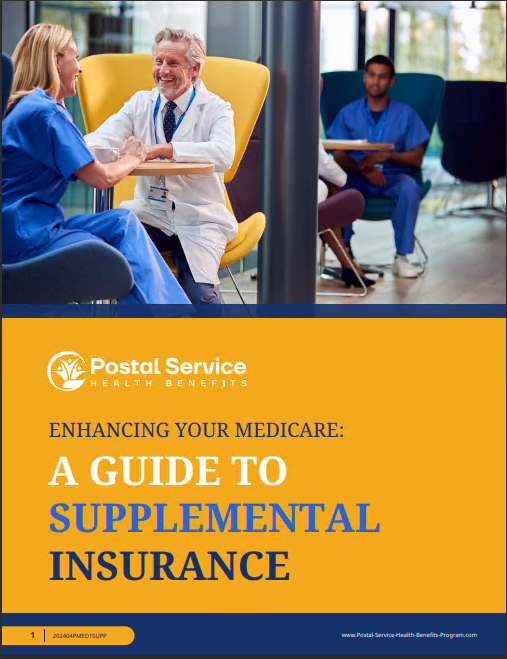Key Takeaways
- The Postal Service Health Benefits (PSHB) program, effective January 1, 2025, will replace the existing Federal Employees Health Benefits (FEHB) coverage for USPS employees and retirees.
- USPS retirees must make key decisions during the 2024 Open Season to ensure seamless health coverage under the new PSHB program.
PSHB is Shaking Up Health Benefits for USPS Retirees – Here’s What You Need to Know
The Postal Service Health Benefits (PSHB) program is poised to bring significant changes to the health benefits landscape for United States Postal Service (USPS) employees, retirees, and their families. The program, which is set to launch on January 1, 2025, marks a departure from the long-standing Federal Employees Health Benefits (FEHB) program that USPS employees have relied on for decades. This shift is part of a broader effort to tailor health benefits more closely to the unique needs of postal workers while also addressing the financial challenges faced by the USPS.
The Origins of PSHB: A Necessary Reform
The PSHB program was born out of the Postal Service Reform Act of 2022, a critical piece of legislation aimed at stabilizing the financial situation of the USPS. Over the years, the USPS has struggled with rising costs and declining revenues, prompting lawmakers to seek solutions that could ensure the long-term viability of the postal service. The introduction of a separate health benefits program for USPS employees and retirees was seen as a way to manage these costs more effectively while still providing quality healthcare options.
The need for such a reform was driven by the recognition that the health benefits needs of postal workers differ from those of the broader federal workforce. By establishing a distinct program, the PSHB aims to address these specific needs more directly, offering plans that are better aligned with the demographics and healthcare usage patterns of USPS employees and retirees.
Important Dates and What They Mean for Retirees
For USPS retirees, the 2024 Open Season, which runs from November 11 to December 9, 2024, will be a pivotal time. This is the only window during which retirees can choose their new PSHB plan. Unlike previous open seasons under the FEHB program, the stakes are much higher this time. If retirees fail to select a PSHB plan during this period, they risk losing their health coverage when the FEHB program is no longer available to them after December 31, 2024.
It’s important to understand that this transition is mandatory. Starting January 1, 2025, USPS retirees will be automatically disenrolled from the FEHB program. Therefore, making an informed choice during the 2024 Open Season is critical to ensuring continuous coverage. USPS and the Office of Personnel Management (OPM) are expected to provide extensive resources to assist retirees in making this transition smoothly.
Navigating the Transition: What Retirees Need to Do
The transition from FEHB to PSHB requires careful planning and attention to detail. Here are some steps that USPS retirees should consider to navigate this change effectively:
-
Educate Yourself on PSHB Options: During the 2024 Open Season, retirees will have access to a variety of PSHB plans. These plans will be specifically designed for USPS employees and retirees, offering benefits that are intended to meet their unique healthcare needs. It’s essential to review these options thoroughly, comparing them not only with each other but also with the FEHB plan you have been using. Pay close attention to factors such as coverage networks, out-of-pocket costs, and any changes in prescription drug coverage.
-
Understand Medicare Integration: A key aspect of the PSHB program is its integration with Medicare, particularly Medicare Part B. If you are already enrolled in Medicare Part B, your transition to PSHB should be relatively straightforward. However, if you have not yet enrolled in Medicare Part B, you will need to do so to maintain full coverage under PSHB. This is because PSHB plans are designed to work in tandem with Medicare, providing comprehensive coverage that reduces your out-of-pocket expenses. Enrolling in Medicare Part B may involve additional costs, so it’s important to budget for this expense as part of your overall healthcare planning.
-
Consider Your Family’s Needs: If you have a spouse or dependents who are covered under your health plan, their coverage will also be affected by this transition. Spousal and family member coverage under PSHB will depend on the primary subscriber’s eligibility and decisions. It’s crucial to consider their healthcare needs when selecting a PSHB plan, ensuring that the coverage meets the needs of all covered family members. Additionally, if your spouse or dependents are eligible for Medicare, their integration with PSHB will also need to be carefully planned.
-
Attend Information Sessions: USPS and OPM are expected to hold information sessions, webinars, and provide online resources to help retirees understand the PSHB options. Attending these sessions can provide valuable insights into the differences between the available plans, the benefits of enrolling in Medicare Part B, and other critical aspects of the transition. Make sure to take advantage of these resources to make an informed decision.
-
Consult with Benefits Advisors: Given the complexity of this transition, it may be beneficial to consult with a benefits advisor who can provide personalized guidance based on your specific situation. These professionals can help you navigate the various options, understand the implications of different choices, and ensure that you select the best plan for your needs.
What to Expect from PSHB Plans
PSHB plans are expected to offer a range of benefits that are comparable to or even better than those available under FEHB. One of the most significant changes is the integration with Medicare, which is designed to provide comprehensive coverage for retirees. This integration is expected to lead to lower out-of-pocket costs for those enrolled in both PSHB and Medicare Part B, as the two programs will work together to cover most healthcare expenses.
In addition to enhanced Medicare coordination, PSHB plans are likely to offer benefits tailored specifically to the postal workforce. This could include better coverage for conditions that are more prevalent among postal workers, such as musculoskeletal disorders from the physical demands of the job. The plans may also offer improved access to healthcare providers who are familiar with the needs of postal workers and retirees.
Another advantage of PSHB is the potential for cost savings. By creating a separate risk pool for USPS employees and retirees, the program can more accurately price premiums based on the specific demographics and health profiles of the postal workforce. This could result in lower premiums and better value for retirees.
Challenges and Considerations for Retirees
While the PSHB program is expected to bring many benefits, there are also challenges that retirees must be prepared to face. One of the primary concerns is the need to enroll in Medicare Part B, which may involve additional costs. For some retirees, the added expense of Medicare Part B premiums could be a financial burden, particularly if they are on a fixed income. It’s important to weigh these costs against the benefits of comprehensive coverage under PSHB.
Another potential challenge is the transition itself. Changing from a familiar FEHB plan to a new PSHB plan can be daunting, especially for those who have been with the same health plan for many years. Retirees may find that their preferred healthcare providers are not included in the PSHB network, or that the coverage for certain medications or treatments has changed. It’s essential to review the details of each plan carefully to avoid any surprises after the transition.
Retirees should also be aware that the PSHB program is new, and there may be some uncertainties as it is implemented. The OPM and USPS are working to ensure a smooth rollout, but as with any major change, there may be initial challenges or adjustments needed. Staying informed and proactive will be key to navigating this transition successfully.
The Long-Term Outlook for USPS Retirees
Looking ahead, the PSHB program represents a significant shift in how health benefits are managed for USPS retirees. While the transition may involve some challenges, the long-term outlook is positive. The creation of a separate health benefits program for USPS employees and retirees allows for more tailored benefits that can better meet the specific needs of this population.
Over time, as the PSHB program matures, retirees can expect continued improvements in the quality and affordability of their health coverage. The program’s focus on integrating with Medicare and addressing the unique healthcare needs of postal workers is likely to result in better health outcomes and more efficient use of healthcare resources.
For retirees, the key to a successful transition lies in staying informed, making careful decisions during the 2024 Open Season, and taking advantage of the resources and support available from USPS and OPM. By doing so, retirees can ensure that they continue to receive the high-quality healthcare they need while enjoying the benefits of the new PSHB program.
Preparing for the Transition
As the 2024 Open Season approaches, it’s crucial for USPS retirees to take proactive steps to prepare for the transition to PSHB. This includes gathering all necessary information, attending informational sessions, consulting with benefits advisors, and carefully reviewing all available plan options. By taking these steps, retirees can ensure that they make the best possible decisions for their health and well-being.
Contact Information:
Email: [email protected]
Phone: 4075554567






